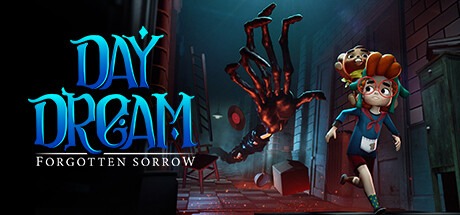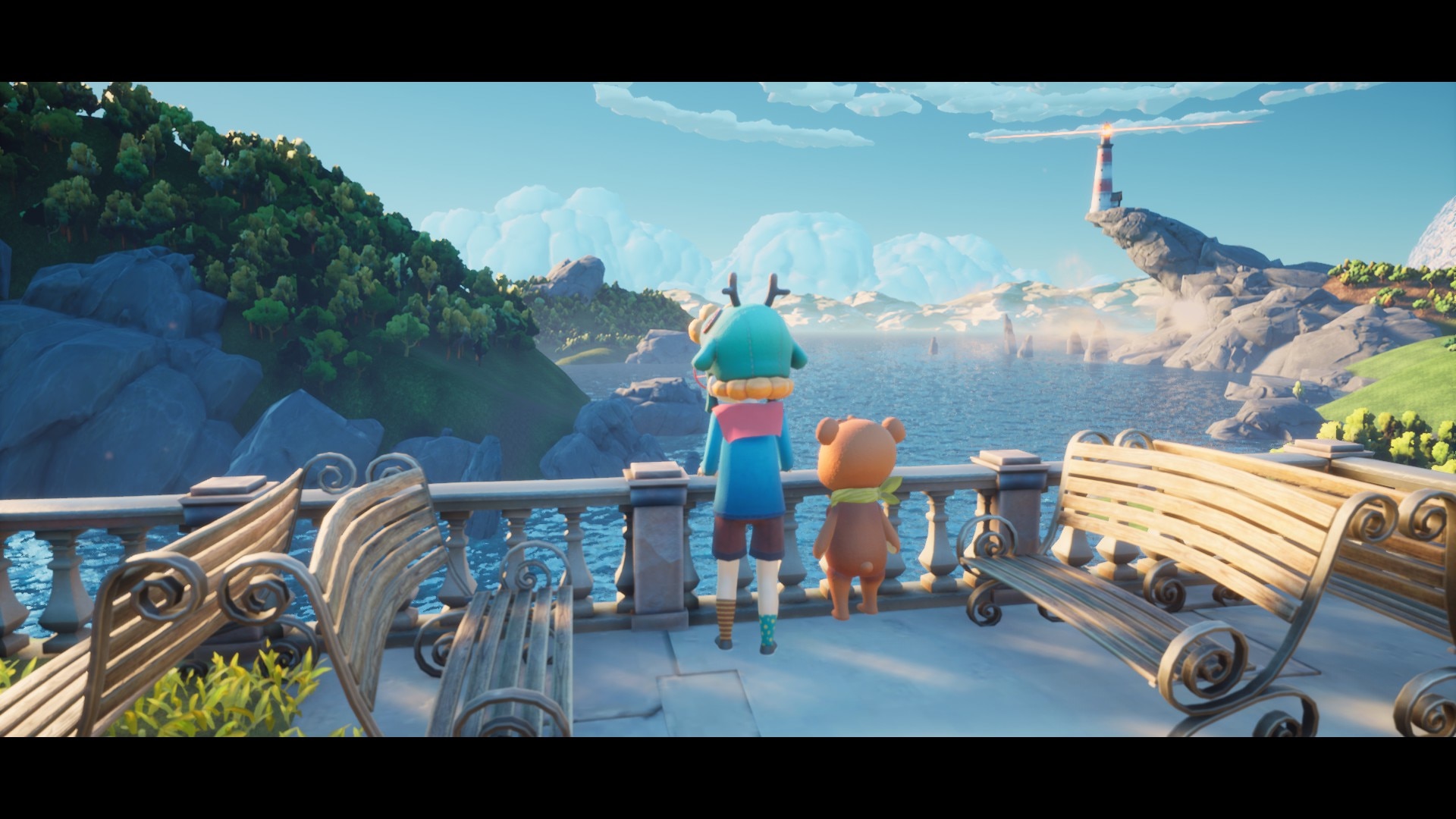
Daydream: Forgotten Sorrow
The visuals are like a Daydream.
The gameplay is Sorrowful.
The frustration can never be Forgotten.
Important:
DO NOT read the detailed description on the store page,
it spoils EVERYTHING about the story.Daydream: Forgotten Sorrow is a puzzle platformer that likely attracts players due to its great presentation. As someone who loves atmospheric platformers, I was also drawn to it not only because of the beautiful visuals but also because of the theme that made me think it would be a very enjoyable and casual experience. What can even go wrong when you have a mix of colorful environments, the journey of a boy and his teddy bear and a seemingly wholesome storyline? Well… much more than I expected. I tried really hard to like the game, but the number of issues this game has strongly impacted my immersion in a deeply negative way, to the point where I ended up feeling as much hate towards it as my initial excitement was.

Let’s start with the positives: visuals and ambiance. The whole game world defies physics and reality, essentially looking like a figment of young Griffin’s imagination. Since Daydream is played from the perspective of a child (Griffin), everything looks bigger and scarier. There are friendly toys, green fields, floating castles and colorful trains, but also eerie elements like shadows on the walls, evil spiders, dark goo and a creepy hand that tries to grab him sometimes. The game does a really good job of depicting the wonderful creativity of a young and innocent mind, and the mix of emotions that he experiences. Daydream: Forgotten Sorrow gives a strong Little Nightmares vibe, although less creepy and disturbing. It is dark to some extent, but being rather mild on the horror scale (close to no horror at all), it can also be played by those that dislike scary games.

Now, onto the negatives:
- Controls: not the best. The environments contain a lot of climbable objects that are not noticeably different from the background objects. Exploring means bumping into all the objects in a room, but bumping into a climbable object will automatically make you climb it. That was probably implemented to ease up the platforming sequences, but in practice first entering a room and trying to understand where you can go and what you can do becomes extremely frustrating. Plus, there are no indicators of whether an object is climbable or not.
- Camera: absolutely horrible. This is a 3D game, with a 2D perspective. This means that you have a side view (just like in any side-scroller), but instead of moving only left and right, you can also move in depth. Now, imagine platforming like this, when you can’t really see the width of your platform (because of the fixed camera), or if the objects next to your platform belong to the same layer (thus allowing you to jump on them) or to a layer located forwards or behind the one you’re on (thus resulting in a failed jump).
- Single-payer co-op mode? The game seems to be distinctly designed for two players (one controlling the boy, the other one controlling the teddy bear). But because this is not currently implemented, the player has to perform actions for both characters at the same time. Holding one side of the controller for the boy and the other side for the teddy bear just doesn’t feel natural.
- Inconsistencies: sometimes your teddy bear somehow manages to jump pretty high, other times you have to pick him up and throw him on a platform located above your head. Sometimes he nicely follows you, other times he’s just… nowhere.
- Interacting with objects: frustrating. The teddy bear is in your way most of the time when you want to pick up an object, resulting in you picking him up instead. When one object requires a two-character interaction (for example, pushing a cart where the boy takes one side, and the teddy bear the other side) it’s pretty difficult to make the other character actually engage in that action. They either don’t listen to your commands, or the prompt to give them a command is missing.
- Jumping down from platforms rather close to the floor causes death. Generally, if there’s a ladder next to a platform, then jumping down from it instead of using the ladder will result in death. This is also encountered in unnecessary cases when the platforms are close to ground level.
- Animation speed: too slow. Recovering after a death takes several seconds, and this is too long considering that you die a lot.
- Bugs / glitches: lots, and of all sorts. The game sometimes doesn’t register that you are crawling, and then you die. Other times it doesn’t register your commands, and then you die. It also happens that the other character glitches badly (for example, when they need to throw an item, 80% of the time this fails and the item respawns somewhere else, making you redo the whole puzzle loop). Aside from these, there are also visual glitches and rendering issues.
- Story: until the very end, there’s no explanation about why you are doing what you do (unless you read the Store page, which spoils everything). The game starts abruptly with the boy and teddy bear running away from an evil force and you just keep going forwards, linearly exploring various rooms or biomes, without an apparent purpose. The ending is also pretty enigmatic and doesn’t actually answer the *why* and *how* that you’ve been asking yourself all along.

A lot of reviews mention that this is an easy game. Personally, I found it quite difficult, partly because of the extra repeats needed to overcome the bugs, but also because of the level design. There are several timed sequences (when some entity chases Griffin), and others with tight jumps and precision movement. Learning them is done through trial and error because the game doesn’t tell you in advance what to expect. Luckily you encounter checkpoints quite often, and lengthier sequences contain at least two or three checkpoints. Therefore, while the gameplay is above casual difficulty, the game is overall quite forgiving, allowing the player to repeat only a short sequence to get back to the point they were before they died. On the other hand, if some puzzle is contained in this short sequence, the whole puzzle has to be solved again, which uselessly wastes time.

The puzzles are largely ok, neither too easy nor too difficult, none of them being out of the ordinary. There are two puzzles in which you have to find the correct order of activating levers / the right combination, yet no indication is given to the player about how to solve it.
The game also features 14 achievements, thankfully none requiring speedruns, zero-death runs, or solving puzzles from the first try. They are all awarded for finding 14 collectibles that aren’t missable in the sense that you can always revisit a previously completed chapter from the chapter selection menu.

Daydream: Forgotten Sorrow is a short game that can be completed in two to three hours, or around five hours if you’re a slowpoke like me. The rest of the time I spent in the game (almost four hours, which is half my playtime) was wasted on redoing platforming sequences over and over again, due to the various issues listed above. The game has a lot of potential, but unfortunately in its current state, it was a disappointing experience.